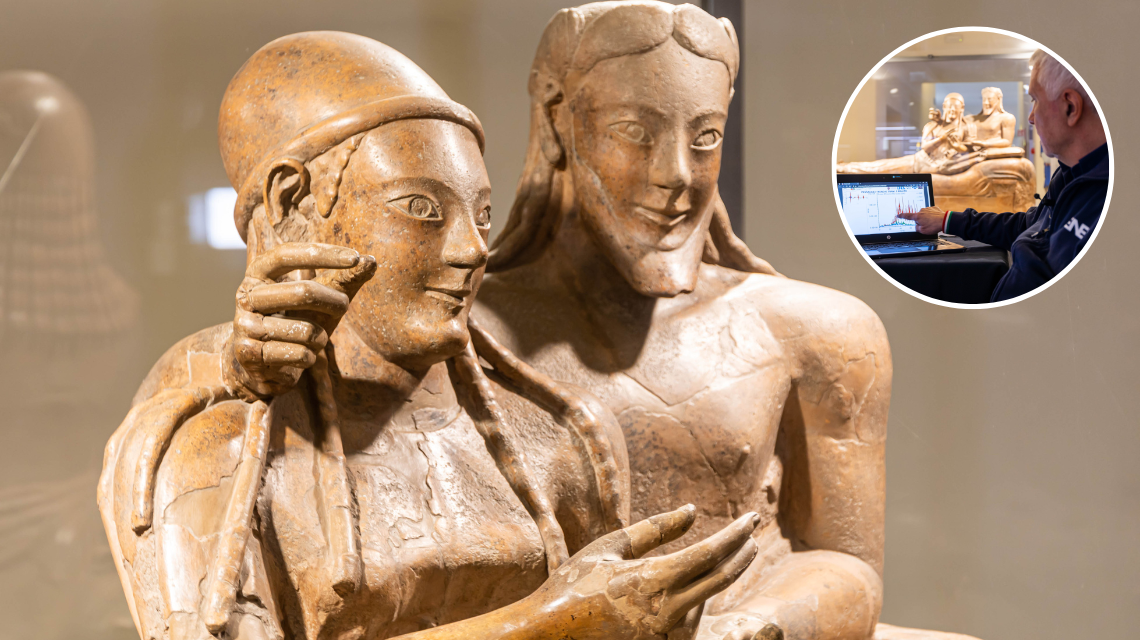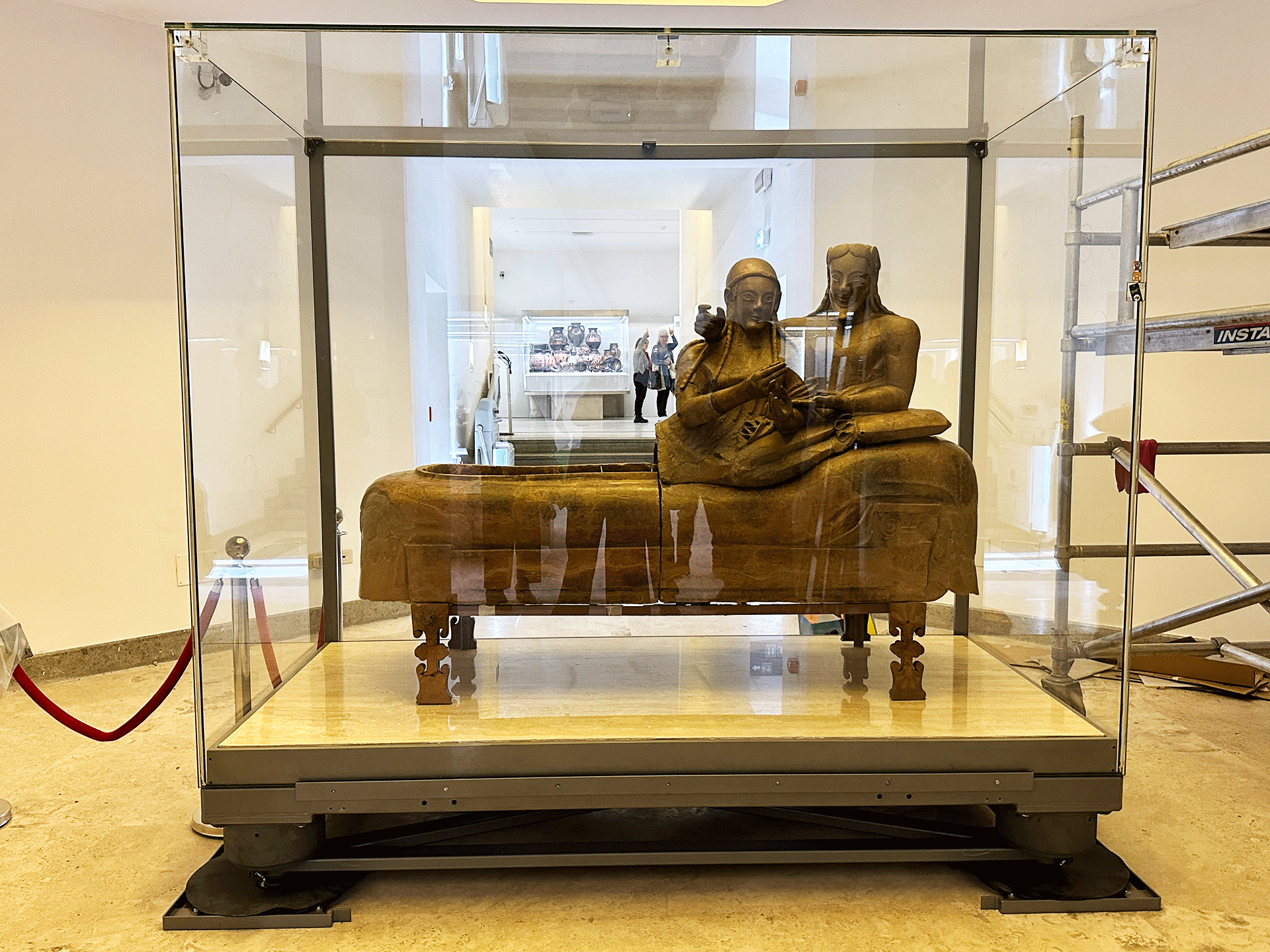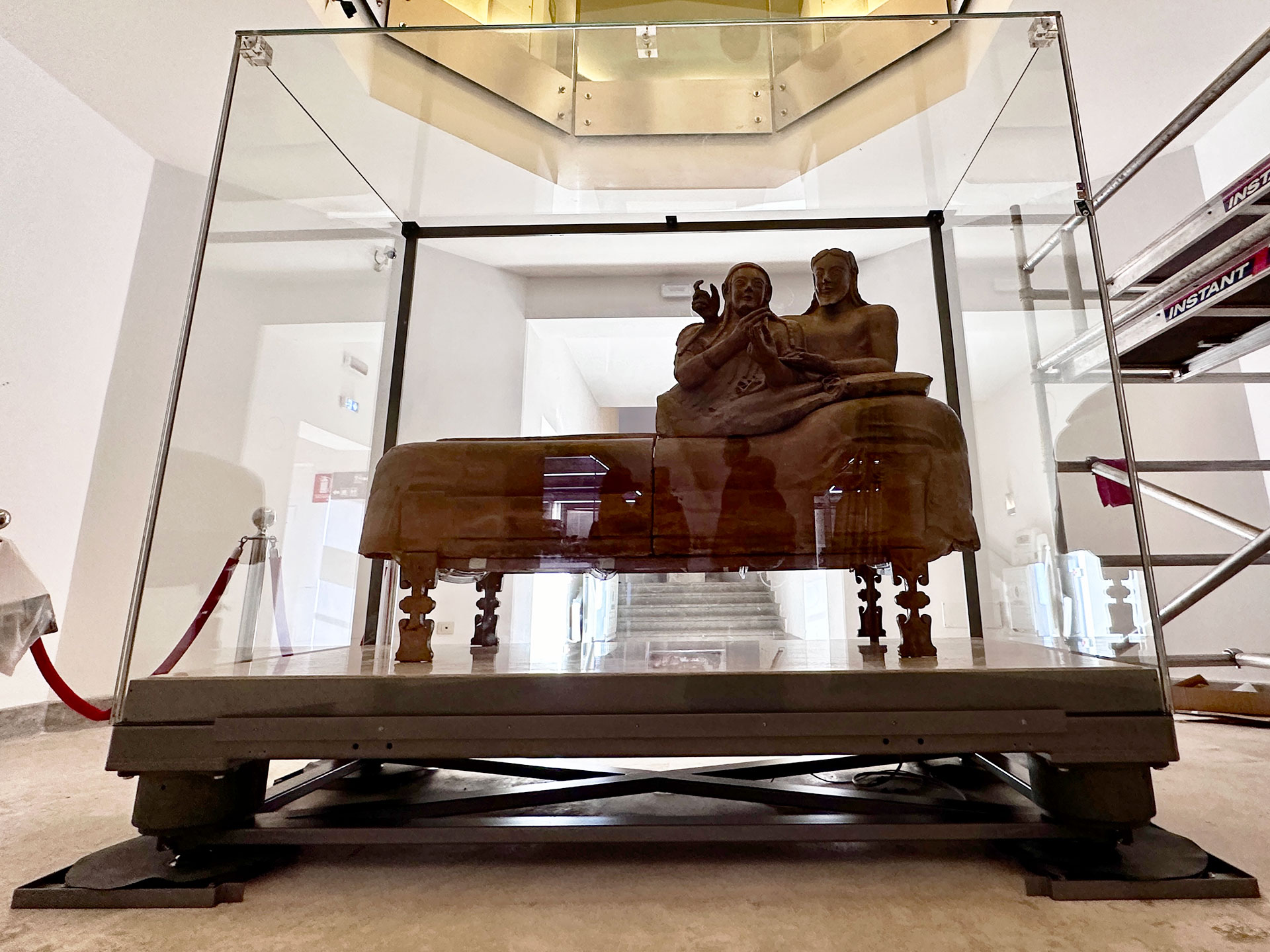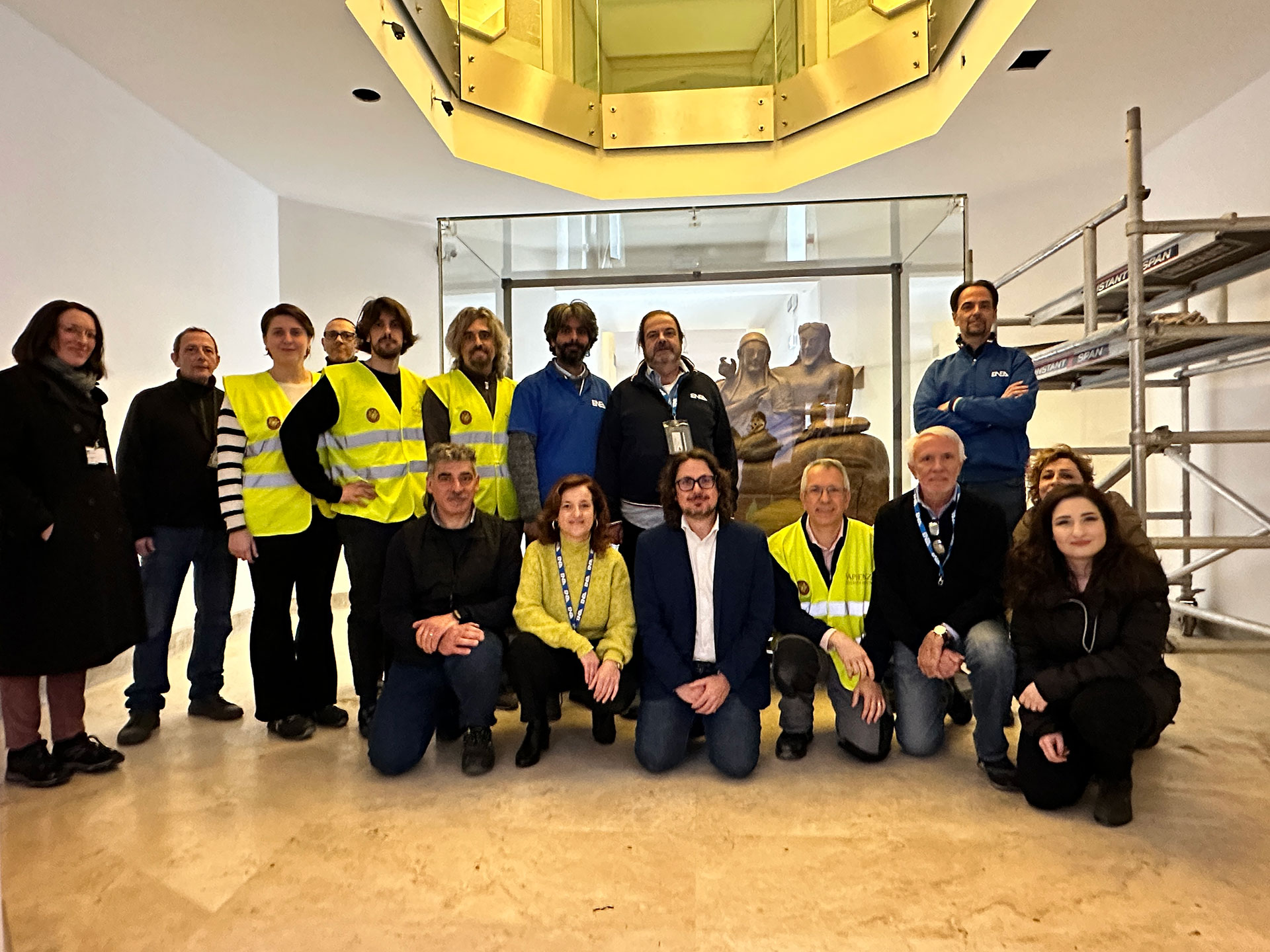Italian National Agency for New Technologies, Energy and Sustainable Economic Development

Cultural heritage: Installed hi-tech platform to minimise vibrations and earthquakes on Etruscan art masterpiece
An hi-tech isolation platform, designed specifically to protect from rail and road traffic vibrations and possible earthquake shocks the “Sarcophagus of the Spouses”, a masterpiece of Etruscan art known throughout the world and kept in the National Etruscan Museum of Villa Giulia in Rome.
The platform was created and installed by a research team from La Sapienza University of Rome (coordinator), ENEA, the company Somma and the Conservation Service of the National Etruscan Museum of Villa Giulia as part of the MONALISA project (Active Monitoring and Vibration Isolation and Earthquakes of Art Objects), which includes Roma Tre University and is funded by the Lazio Region and the Ministry of University and Research.
The infrastructures and technologies employed – which include motion magnification, hi-tech sensors, shaking tables, mechanical test benches, mathematical models and computing resources - allowed to study innovative aspects aimed at the conservation of the artwork.
“Although the base isolation technique is widely used to mitigate damage to buildings during earthquakes, it is still little used to protect museum items, and its application against traffic-induced vertical vibrations is almost unknown”, pointed out Luigi Sorrentino, associate professor at La Sapienza University and scientific coordinator of the project.
“The innovative approach we have developed can be applied to any artwork, becoming a methodological and technological model to be adopted to protect national art masterpieces, simply by calibrating the rigidity of isolation devices, based on the actual vibrations induced by traffic and the seismic hazard of the site", pointed out Paolo Clemente, structural engineer and ENEA research director.
“An innovative project to protect one of the most famous masterpieces of antiquity, a work of art known worldwide, discovered in 1881 in 400 fragments in the Banditaccia necropolis in Cerveteri. Made in terracotta, only one replica is known, kept in the Louvre Museum. The "spouses" are threatened by the vibrations generated by cars and trams passing along the nearby Via delle Belle Arti and by the Rome-Viterbo railway, underground on that stretch", said Museum Director Valentino Nizzo. “The MONALISA project and the expertise involved in the activities will ensure the couple known for the most iconic embrace of ancient art a better and certainly long-lasting future.
“First of all we studied the dynamic properties of the Sarcophagus thanks to motion magnification, a technology that amplifies even the smallest motions, making them visible to the naked eye, allowing us to identify the parts most at risk of breaking or collapsing”, pointed out Vincenzo Fioriti at ENEA, among the first in the world to use technology to preserve cultural heritage. “The geometry of the Sarcophagus was detected and converted into a point cloud using digital photomodeling techniques that allow us to avoid contact with the artefact” said Aurora Vincenti, researcher and scientific coordinator of the project for ENEA.
“The point cloud was converted into a geometric model appropriately corrected to remove duplications and gaps, to allow export to a mechanical calculation model” pointed out Omar Al Shawa, researcher at La Sapienza University. Carefully weighing the entire reliquary and one of its glass plates allowed to estimate the weight of the Sarcophagus without having to touch it. “The dynamic properties of the Sarcophagus and its weight allowed us to calibrate the undetectable thickness of the statue and the stiffness of the material, employing a computer model used to simulate the terracotta stress in the current situation and following the insulation” said Giuseppe Occhipinti, Sapienza research fellow for this project.
In addition to studying isolation from traffic vibrations and the seismic hazard of the site, a dynamic monitoring system was developed thanks to a series of sensors, capable of measuring both the vibrations on the museum floor, underneath the display case which hosts the Sarcophagus, and on the isolation platform. “The monitoring system will record vibrations 24 hours a day and send alerts to smartphones when threshold values are exceeded,” Aurora Vincenti pointed out.
The isolation platform was created by the Lazio company Somma, with the technical-scientific support of ENEA and La Sapienza University of Rome. “The small size of the isolation platform, the necessity to have different types of springs for vertical stresses from traffic and earthquakes, and the need to limit the height of the platform due to exhibition needs, posed many challenges”, pointed out Chiara Castino, sole director of Somma.
To measure the "isolation" efficiency, the team created a copy of the Sarcophagus of the Spouses, which was placed on the platform and subjected to seismic and traffic vibration tests on the shaking table at the ENEA Casaccia Research Centre, with excellent results.
“The tests on the shaking table, capable of reproducing both seismic waves and traffic-induced vibrations, demonstrated that the isolation platform significantly reduced, at the base of the Sarcophagus, both seismic and traffic accelerations, characterized by an important vertical component", pointed out Ivan Roselli at ENEA.
The activities, which recently ended, also included new measurements of traffic-induced vibrations -especially railway traffic- in the pre-existing case, the removal of the original Sarcophagus, the installation of the new isolation platform, the relocation of the Sarcophagus and a further measurement campaign.



